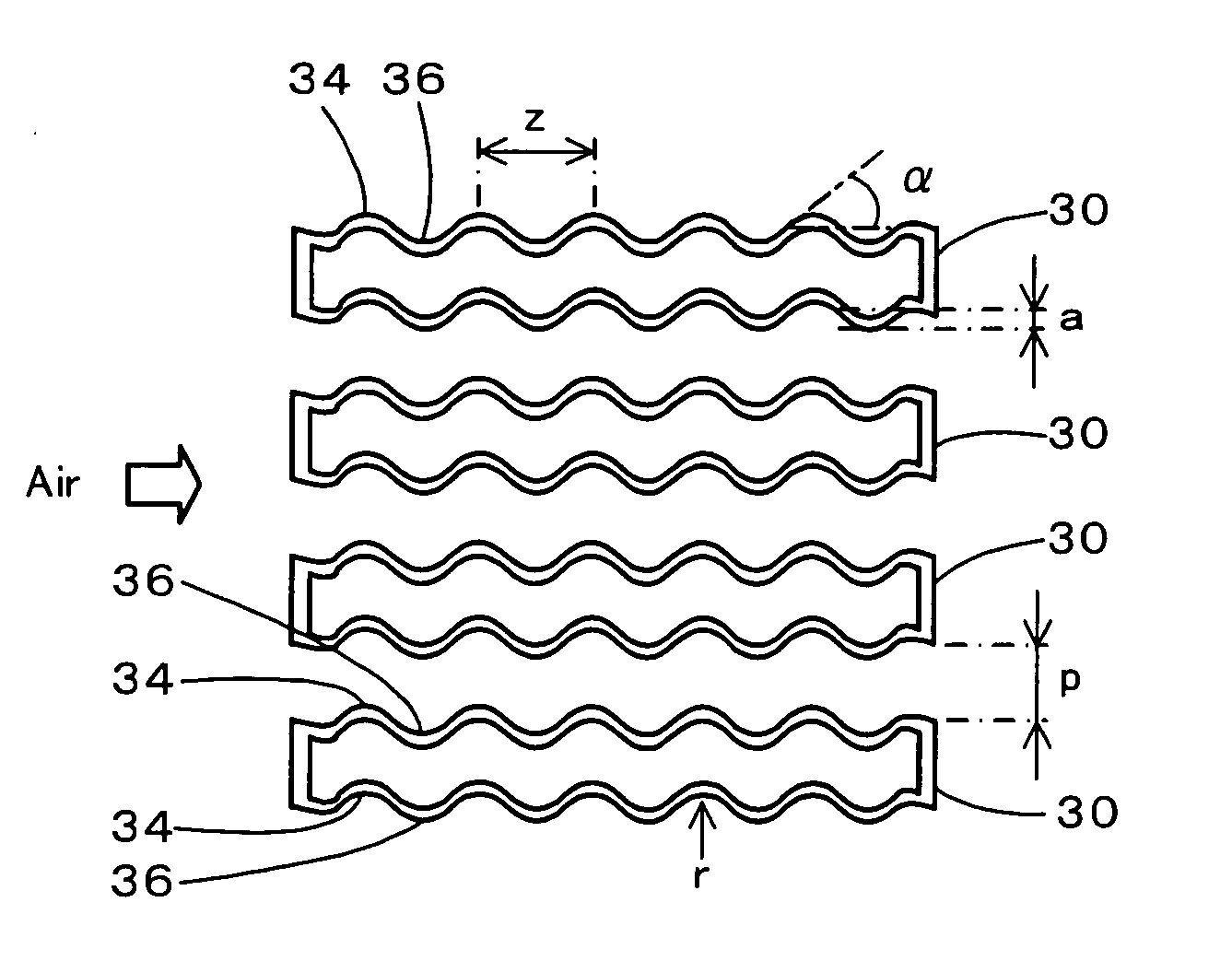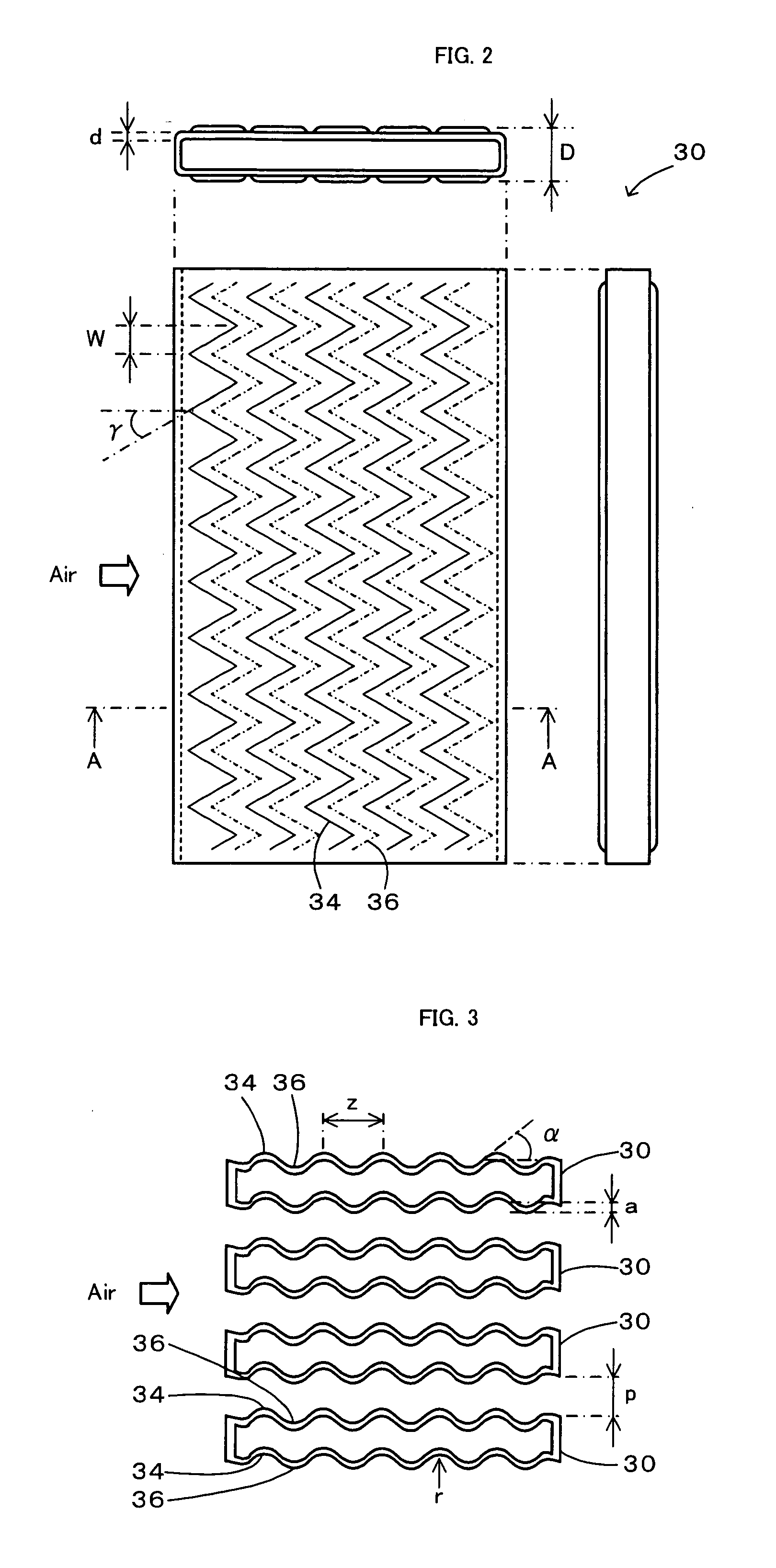Heat exchanger
a heat exchanger and heat exchanger technology, applied in the field of heat exchangers, can solve the problems of reducing the attachment location of the heat exchanger, unnecessarily large amount of waste heat, and low thermal conductivity, and achieves the effect of high level of secondary flow components, high heat exchange efficiency, and high efficiency of heat exchang
- Summary
- Abstract
- Description
- Claims
- Application Information
AI Technical Summary
Benefits of technology
Problems solved by technology
Method used
Image
Examples
Embodiment Construction
[0032]One mode of carrying out the invention is discussed below as a preferred embodiment with reference to the accompanied drawings. FIG. 1 is an outline view showing the appearance of a heat exchanger 20 in one embodiment of the invention. FIG. 2 is an explanatory view showing a top face, a front face, and a side face of a heat exchanging tube 30 used for the heat exchanger 20 of the embodiment. FIG. 3 is a sectional explanatory view showing A-A cross sections of plurality of the heat exchanging tubes 30 shown in FIG. 2. As illustrated, the heat exchanger 20 of the embodiment includes multiple heat exchanging tubes 30 that are formed as flattened hollow tubes and are arranged in parallel with one another, and a pair of headers 40 and 50 that are provided to cover respective ends of the multiple heat exchanging tubes 30 and to make an inflow and an outflow of a heat exchanging fluid into and from the multiple heat exchanging tubes 30.
[0033]Each of the heat exchanging tubes 30 is fo...
PUM
 Login to View More
Login to View More Abstract
Description
Claims
Application Information
 Login to View More
Login to View More - R&D
- Intellectual Property
- Life Sciences
- Materials
- Tech Scout
- Unparalleled Data Quality
- Higher Quality Content
- 60% Fewer Hallucinations
Browse by: Latest US Patents, China's latest patents, Technical Efficacy Thesaurus, Application Domain, Technology Topic, Popular Technical Reports.
© 2025 PatSnap. All rights reserved.Legal|Privacy policy|Modern Slavery Act Transparency Statement|Sitemap|About US| Contact US: help@patsnap.com



